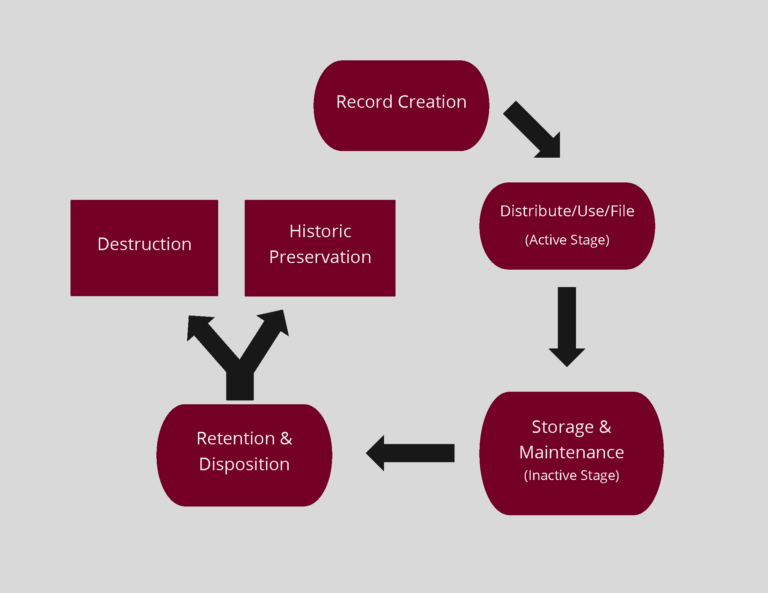Records are a basic tool of transacting business on behalf of all UW System institutions. They are the foundation for accountability. Records management is the process of actively and appropriately managing a record throughout its’ lifecycle. From creation, to filing and storing, to proper disposition.

Visualization of the public records lifecycle.
“Records” are materials, regardless of physical form or characteristics made or received by any state employee while in connection with the transaction of public business. These records are considered active when used for decisions, evidence, and other business purposes. Once records have lived past their immediate use they must be stored and maintained properly, so they remain accessible for reference. The Public Records Board approves records disposition authorizations (RDAs). These RDAs tell us how long we must keep each type of record. After a record meets its’ required retention period it can be disposed of. The record’s RDA will tell you how to properly dispose of the record. Some records RDAs will indicate that the record can be destroyed, and other records RDAs will indicate that the record should be transferred to the institution’s archives, where it will be evaluated for historical value.

